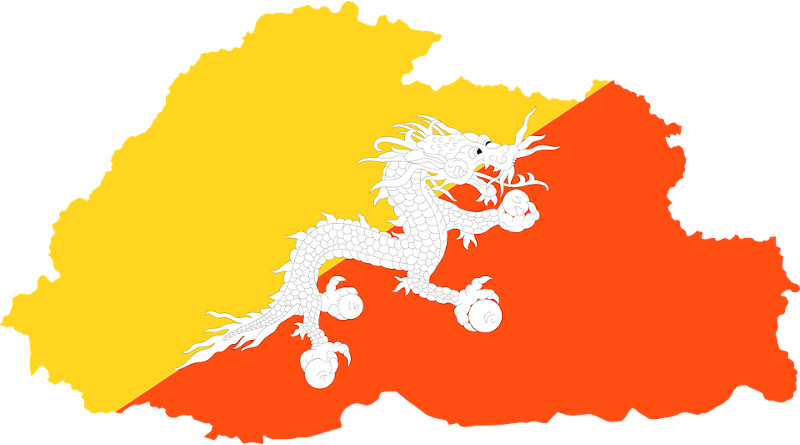Bhutan: Vision Statement Of 2020, Is It Relevant Now? – Analysis
By SAAG
By Dr. S.Chandrasekharan
In the year 1999 coinciding with the Silver Jubilee Celebrations of Gyalpo IV’s Coronation, Bhutan released a vision document for the next 20 years and called it as a “Vision Statement” of 2020.
This hefty document consisting of over 1000 pages is in two parts- with the first part taking stock of the then current situation and the challenges ahead and the second part going into specifics to what it called a “distinctive Bhutanese Path of Development”.
It was a tremendous effort and in making this document, people from all walks of life were consulted. This included according to the document, Academics, Officials, Lamas, Monks, Pundits, Students, Youth, Teachers, Industrialists, Administrators, Diplomats, NGOs, Community Leaders, Expatriates, Businessmen, and the Villagers.
The idea of making the document was said to be
1. Offers a general scenario of Development
2. Promotes consensus
3. Ensures Continuity of Politics
4. A general declaration for all development Partners about Strategies and Goals.
While the Five year Plans got all the attention in the matter of Governance, the Vision document was hardly mentioned in the media or in the statements of administrators, Economists and Politicians, until the Kuensel officially took up the challenge of examining the document and see how far Bhutan had progressed and fulfilled the strategies and the challenges posed in that ambitious document.
Until the new Constitution came up with politically elected leaders, perhaps the vision document was relevant at that time. Once a political Party came to power, the focus of the Ruling Party was more to fulfill the obligations in the party manifesto before the elections. Second was perhaps the Fiver year Plans that needed immediate attention and implementation.
In a presentation in the year 2017, the Gross National Happiness Commission’s Chief Planning Officer had said that Bhutan has largely been successful in achieving or is on track of achieving almost all the milestones. This is in my view is a little exaggerated, but yet Bhutan surprisingly has progressed beyond expectations in the Social sector in health, education and Forest Conservation.
In 1961 Bhutan started with 2 Hospitals and 11 dispensaries. In 2018 itself it had 32 hospitals and hundreds of dispensaries covering over 95.6 of the population.
Life Expectancy had reached 70.2 in 2017 from a meagre 37 in 1960. With a population growth of 3.50 percent, the fear was that the country will be overwhelmed with an increased and unmanageable population.
This has not happened. The present population is pegged at 727,145 with the fertility rate at 1.3 percent per female- a remarkable achievement. Infant mortality rates a sure indicator of the progress is 15.1 per thousand of the population from 60.5 earlier. The country continues to be committed to maintain its biological diversity and the forest cover is at 83.90 percent another creditable achievement though it has been at the cost of reduction of cultivable land.
But where Bhutan has failed with reference to the vision document was in the matter of self-sufficiency in agriculture and generation of power. With huge hydroelectric potential and ambitious target of production of 10,000 MW by 2020, the country has not managed anywhere near that target.
Similarly, the private sector has lagged far behind consistently in the last twenty years and one indicator that came up recently was that the private sector was unable to match the increase in pay and allowances to Government Servants and even in Public Sector Undertakings.
Unemployment is still a major problem and the country is yet to make a fair assessment of its mineral resources like lead, copper, Iron and Gold. Some critics question whether it is realistic to go for a vision statement covering a long period of time like 20 years in planning and pursuing the targets.
This question needs to be resolved as there is already a move to go for another vision document covering twenty- five years – year 2045. A counter view has been given by a former Prime Minister and Economic Affairs Minister Khandu Wangchuk who said that such a “vision has become necessary now with democracy, politics, and vote bank demands “wherein there is a risk of compromising long term national interest to short term interests.
But should the elected Government go for the election promises made prior to the elections or follow the strict directives and the challenges already specified in the “Vision Document”. Perhaps there could be mix of both and this needs to be further examine. When the relevance of even the five-year plans is being questioned, it is doubtful whether a long-term vision document covering 25 years it at all necessary.
Prime Minister Dr. Lotay Tshering was loudly thinking of even giving up the five-year plans. He said that the five-year planning system has no vision or soul. He gave two reasons for giving the five-year plans. The first was that when a new party comes to power it is already bound by the plan and cannot go far beyond what is laid down.
The second is more procedural. Hardly does the Five-year plan coincide with the formation of a new Government and so planning for the country when the party may not be in power that long may also be difficult. Also, the World is changing fast in all respects- in social, economic, technological and even in political dynamics. To foresee developments and challenges in such a fast changing environment over a long stretch of time like what is being planned is difficult and futile too.

